IN 1866, A CONSANGUINEOUS MARRIAGE TOOK PLACE BETWEEN PRINCESS DAGMAR OF DENMARK
(DAUGHTER-IN-LAW OF QUEEN VICTORIA) AND TSAREVICH ALEXANDER—THE BROTHER OF THE RECENTLY DECEASED TSAREVICH NICHOLAS. |
This expose will make all previous histories of the Russian Revolution obsolete . . . or gone with the wind!
History does repeat itself in marvelous ways....Most people are familiar with King Henry VIII's divorce from Roma over the question of marrying his dead brother's wife. "Church Militant" Pope Julius II had granted King Henry and Catherine of Aragon a "license to sin" or dispensation to commit incest. Catherine could not produce a male heir and that led to Henry divorcing the wife of his dead brother Arthur.
"The King's Great Matter" also led to the divorce from Roma, and the downfall of the Tudor dynasty when the Queen Elizabeth double went to "Purgatory" in 1603.
In 1868, Tsarevich Alexander and Tsarina Dagmar had a boy that they named Alexander.... Alexander lived only 11 months before he was sent to Orthodox heaven. The following year Dagmar gave birth to another boy that was named Nicholas....He was the infamous Russian Revolution Tsar.
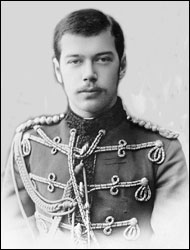 Tsarevich Nicholas (1869–1893) in 1889. |
|
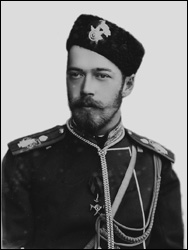
Nicholas "Dagmar" (b. 1865)
in 1892. |
The switch was made in 1893 nwhen the real Tsarevich was sent directly to Orthodox heaven....Nicholas "Dagmar," aka Tsar Nicholas II, and Tsarina Alexandra were the central figures in the Russian Revolution!
Children should resemble either parent if the couple were faithful to their marriage vows and did not commit adultery.....Physically, Nicholas resembled his father, Tsar Alexander III, and Nicholas "Dagmar" resembled his Viking mother.
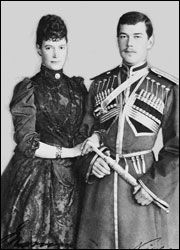 Tsarina Maria and Nicholas in 1889. |
|
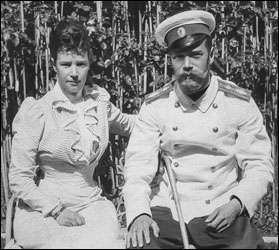 Dowager Empress Maria and
Nicholas "Dagmar" in 1896. |
Nicholas "Dagmar" and Tsarina Alexandra enjoyed a comfortable retirement in England or Denmark, but the 4 Grand Duchesses and Tsarevich Alexis were sent to Orthodox heaven in 1918.
The real Tsarevich was "Prince Charming," and he would have made an enlightened and progressive ruler like Crown Prince Rudolf of Austria.
The planning for the Russian Revolution was very long and complicated, but it does fit together like a solved jigsaw puzzle when all the pieces are available.
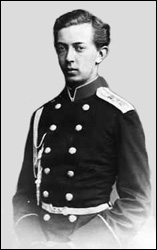 Tsarevich Nicholas in 1863. (Sept. 20, 1843–April 24, 1865). |
|
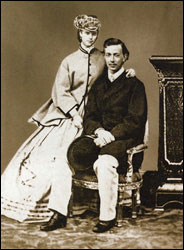 NIcholas and Dagmar's official 1865 engagement photo. |
The Tsarevich bypassed the Catholic "Purgatory and went straight to Orthodox heaven....A few months later Dagmar was suffering from morning sickness:
By September Dagmar was ill. She had a high fever, headaches, pains in the abdomen and was unable to eat. Her nerves were in shreds and her hair had to be cut short, although may attributed this to ancient mourning ritual. After her recovery she was still very shady for some time and did not even want to ride, although it was her favourite pastime. It reminded her too much of the time Nix first complained of back pain. (Hall, Little Mother of Russia, p. 24.).
Princess Dagmar did give birth to a boy who was named NICHOLAS after her deceased beau.
 Tsarevich Alexander in 1865. |
|
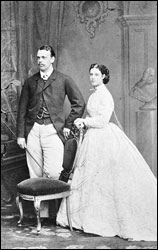
Alexander and Dagmar's official
1866 engagement photo. |
To uncover nakedness was a Hebrew idiom or figure of speech meaning "to marry or have sex with a person." In today's English it would best be phrased as "no kissin' cousins" allowed! JEHOVAH issued strict decrees against consanguinity because ancient Egypt was overrun with "kissin' cousins."
On October 28, 1866, with the blessing of the "Orthodox" clergy, the couple were married in the Grand Church of the Winter Palace in St. Petersburg. Contrary to all expectations, an heir to the throne soon arrived and the couple named him Nicholas.
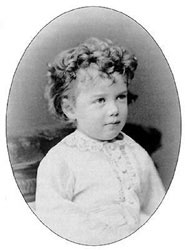
Baby Tsarevich Nicholas
(1868–1893). |
|
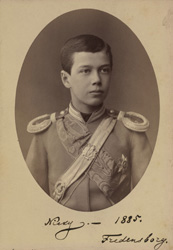 Tsarevich Nicholas aged 17. |
Tsar Alexander was a bear of a man and 6' 3" in height. He could straighten a horseshoe with his bare hands. However, he was totally dominated by Dagmar the Dane, who ran the vast Russian Empire from behind the scenes!
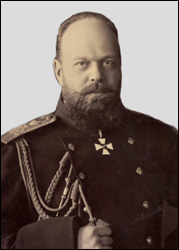 Tsar Alexander III (1845–1894). |
|
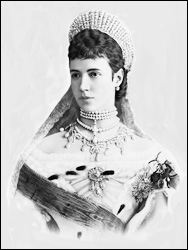 Empress Maria Feodorovna (1847–1928). |
In 1891, Tsarevich Nicholas was sent on a grand tour of the countries of the Far East to broaden his horizons and prepare him for his future role as Emperor of Russia.
 Tsarevich Nicholas in Nagasaki in 1891. |
|
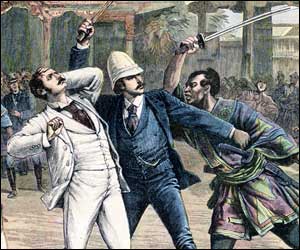 A pictorial representation of the attack on the Tsarevich. |
The tense situation was diffused when the Emperor of Japan visited the Tsarevich personally and expressed his regret for the attack. The tour was terminated and the grateful to be alive Tsarevich returned to St. Petersburg.
 "Prince Charming" in 1889. |
|
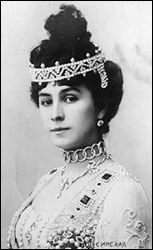 Prima ballerina Mathilde Kschessinska (1872–1971). |
Here is a brief quote from the memoirs of the prima ballerina:
On August 10th the Tsarevich and the Emperor left for Libava, and then for Denmark. The Tsarevich did not return to St. Petersburg until the autumn, on October 10th 1893. (Kschessinska, Dancing in Petersburg, p. 38).
Mathilde's memoirs were not published in English until 1960, and by that time all the protagonists in the Russian Revolution were long dead.
In April 1884, Queen Victoria traveled to Coburg in Germany for the wedding of Princess Victoria Melita of Saxe-Coburg and Gotha to Ernest Louis, Grand Duke of Hesse.
The "grandmother of Europe" also celebrated the engagement of Nicholas "Dagmar" to Alix of Hesse
 Engagement photo of Nicholas "Dagmar" and Alix of Hesse, April 8, 1894. |
|
 Queen Victoria, "Kaiser Bill," Nicholas "Dagmar," Queen Victoria, "Kaiser Bill," Nicholas "Dagmar," and Alix of Hesse at Coburg, April 1894. |
Immediately after the engagement of Nicholas "Dagmar" and Alix of Hesse, the mighty Tsar Alexander III became very sick. That was the first time in his life that the physical giant every suffered any kind of illness.
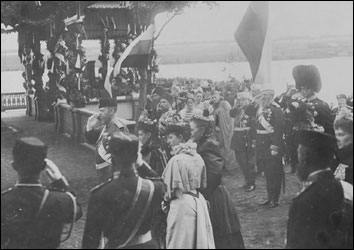 Tsar Alexander III blessing the flags at Krasnoe Selo, August 1, 1894. |
|
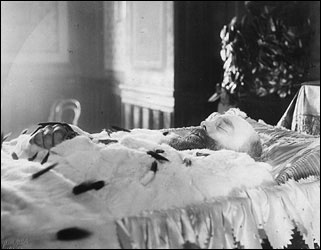 Tsar Alexander III was sent to Orthodox heaven on November 1, 1894. |
Naturally, his German physician was an expert in the use of poison and he expedited Tsar Alexander's trip to the Orthodox heaven. The Tsar showed all the symptoms of poisoning, and he was embalmed quickly because his body was decomposing rapidly.
The Tsar had an elaborate state funeral and was buried in the Peter and Paul Fortress in St. Petersburg.
With the real Nicholas in Orthodox heaven, Nicholas "Dagmar" succeeded Alexander III as Emperor of Russia.
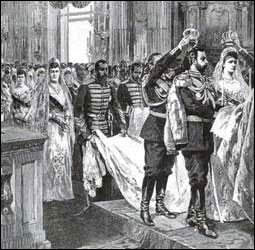 The wedding of Tsar Nicholas "Dagmar" and Alix on Nov. 1, 1894. |
|

The coronation of Nicholas Dagmar and
Alix on May 26, 1896. |

